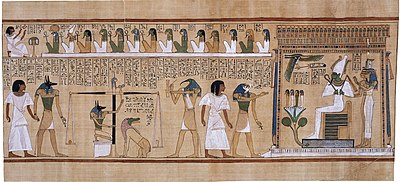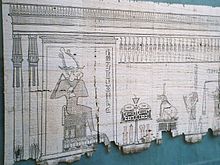
Back Doeat Afrikaans دوات Arabic دوات ARZ Duat AST Duat Azerbaijani Дуат Bulgarian Llista de personatges de la mitologia egípcia#D Catalan Duat Czech Duat Danish Duat German


The Duat (Ancient Egyptian: dwꜣt, Egyptological pronunciation "do-aht"), also called Amenthes (Ancient Greek: Ἀμένθης, romanized: Aménthēs) or Te (Coptic: Ⲧⲏ, romanized: Tē), is the underworld in ancient Egyptian mythology. It has been represented in hieroglyphs as a star-in-circle: 𓇽. The god Osiris was believed to be the lord of the underworld. He was the first mummy as depicted in the Osiris myth and he personified rebirth and life after death. The underworld was also the residence of various other gods along with Osiris.
The geography of the Duat is similar in outline to the world the Egyptians knew: There are realistic features like rivers, islands, fields, lakes, mounds and caverns, but there were also fantastic lakes of fire, walls of iron, and trees of turquoise. In the Book of Two Ways (a Coffin Text) there is even a map-like image of the Duat.[1]